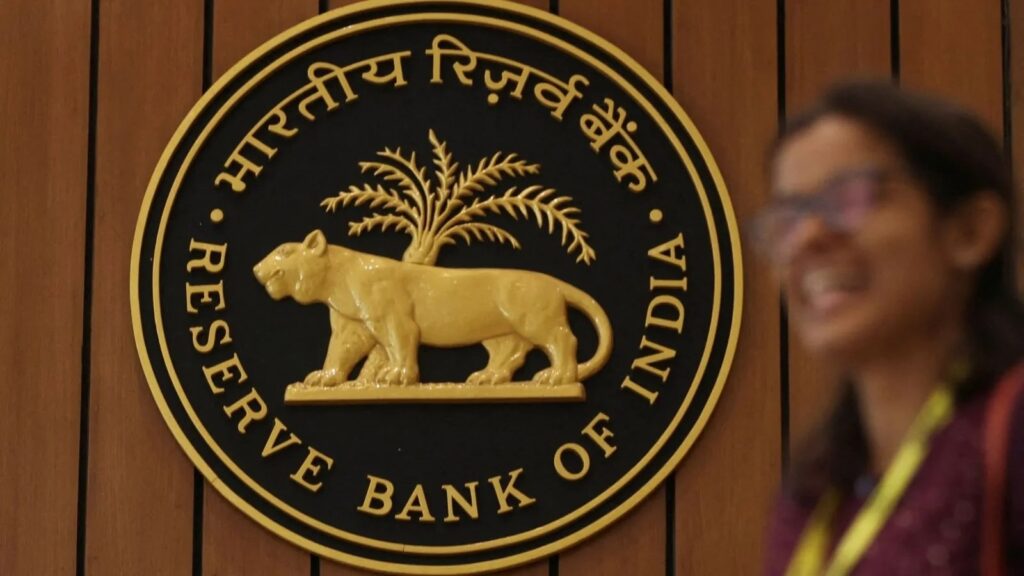970x125
Lending and deposit rates in the banking system will remain unchanged as the Reserve Bank of India (RBI) on Wednesday kept its key policy rate—the repo rate—steady at 5.5 per cent. The six-member Monetary Policy Committee (MPC) voted unanimously to pause for the second consecutive meeting, while also retaining its “neutral” stance, signalling that interest rates could move in either direction depending on how growth and inflation unfold.
970x125
While slashing the inflation projection to 2.6 per cent from 3.1 per cent and raising the growth rate to 6.8 per cent from 6.5 per cent projected earlier, the MPC indicated that the decision comes at a time of steady domestic growth, subdued inflation, and heightened global risks. Escalating trade tariff disputes and H-1B visa tensions with the United States have added to uncertainty, prompting the RBI to adopt a watchful approach while maintaining flexibility in its policy direction.
Lending rates stay put, but with caveats
The immediate impact of an unchanged repo rate is that all external benchmark lending rates (EBLR) linked directly to the repo will remain unchanged. Borrowers with loans tied to the repo benchmark will not see any change in their equated monthly instalments (EMIs). Deposit rates will also remain unchanged.
However, the story is slightly different for borrowers whose loans are linked to the marginal cost of funds-based lending rate (MCLR). Banks often recalibrate their MCLR depending on their cost of funds, liquidity conditions, and credit demand. While repo-linked rates will remain steady, lenders may still make marginal adjustments to MCLR-linked products.
Earlier this year, when the RBI cut the repo rate by a cumulative 100 basis points (bps) between February and June 2025, most banks passed on the benefit by lowering repo-linked lending rates. MCLR was also reduced, though the transmission was more gradual. However, some banks raised the home loans in the wake of pressure on margins.
Why did RBI pause again?
This is the second consecutive meeting where the MPC has opted for a pause after the aggressive rate cuts earlier in the year. The committee’s decision reflects a balancing act: it wants to support growth while also acknowledging inflationary risks. “Growth-inflation narrative has altered since the August 2025 policy. Inflation has turned benign and there has been significant moderation in inflation,” RBI Governor Sanjay Malhotra said.
Several factors contributed to the decision: The introduction of a simplified two-slab Goods and Services Tax (GST) structure—5 per cent and 18 per cent, replacing the earlier four-rate system—has reduced tax burdens on several items, boosting consumption.
Story continues below this ad
India’s GDP growth surged to 7.8 per cent in Q1 FY2026, the highest in five quarters, compared to 6.5 per cent in the same period last year and 7.4 per cent in the previous quarter. Rural demand is improving and government capital expenditure continues to support activity, though urban consumption and private investment remain tepid. The MPC has now increased the growth projection to 6.8 per cent.
Thanks to GST rationalisation, the RBI expects average inflation in FY2026 to be 2.6 per cent, down from an earlier projection of 3.1 per cent. While the short-term inflation outlook is comfortable, the trajectory could turn upward beyond FY2026 as input costs and global volatility feed through.
Governor Sanjay Malhotra, while announcing the policy, said the GST rationalisation is likely to offset issues related to global trade and other uncertainties.
Global and trade backdrop
The policy meeting took place in a tense international environment. The US has slapped an additional 25 per cent tariff on Indian goods from August 27, raising the total tariff burden on certain exports to 50 per cent. Negotiations between India and the US are ongoing, and the outcome could materially affect India’s trade and growth outlook.
Story continues below this ad
Meanwhile, the US Federal Reserve recently cut its benchmark rate by 25 bps to a 4–4.25 per cent range—the first cut of 2025—signalling concerns over slowing global growth. For India, the Fed’s move could influence capital flows, currency dynamics, and inflationary pressures through imported costs.
Neutral stance: What It Means
The RBI’s neutral policy stance, maintained since June, means it is neither committing to further rate cuts nor preparing the ground for tightening. In effect, the central bank has positioned itself to respond flexibly to incoming data. This means if inflation remains benign, there could be rate cuts in the subsequent policies.
If growth shows signs of faltering again or global shocks worsen, the RBI has room to cut further. Conversely, if inflation surprises on the upside, the neutral stance allows it to pivot toward raising rates.
Growth and inflation outlook
The RBI has hiked its FY2026 GDP growth forecast to 6.8 per cent, citing robust Q1 numbers and government spending while private capex recovery remains patchy and global headwinds could weigh on exports. “Global uncertainties will likely decelerate growth in the second half of fiscal and beyond,” Malhotra said.
Story continues below this ad
On inflation, the RBI is more optimistic in the short term. In its August policy, it had already lowered the projection for FY2026 CPI inflation to 3.1 per cent from 3.7 per cent earlier. With the GST rationalisation, analysts expect the number to fall further by around 50 bps, with the full-year average closer to 2.6 per cent.
The road ahead
For now, the RBI appears content to adopt a wait-and-watch approach. With growth holding firm, inflation relatively subdued, and fiscal spending providing support, there is little immediate pressure to adjust rates. Yet uncertainties loom large—from US tariff actions and volatile crude oil prices to unpredictable global monetary shifts.
Borrowers can take comfort in the fact that repo-linked loan rates remain unchanged, at least for now. The real challenge for the central bank, however, will arise if external shocks undermine India’s growth momentum or if inflation accelerates faster than anticipated. The October policy, in essence, reflects a pause with intent—designed to preserve flexibility and keep every option open in a volatile global environment.
970x125

